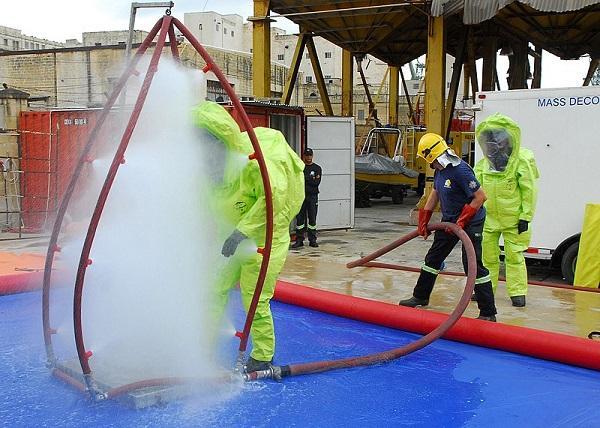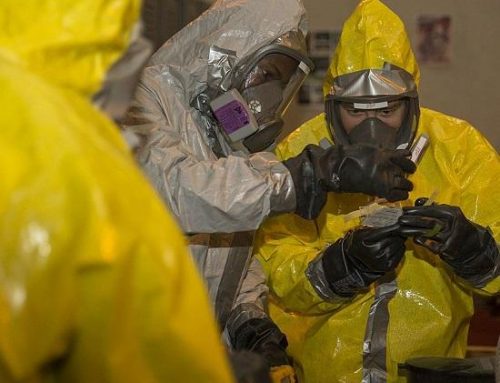Decontamination procedures are an essential part of ensuring the safety of workers and the public in emergency situations involving hazardous materials. In this article, we’ll provide some helpful advice to businesses on implementing effective decontamination procedures in accordance with HAZWOPER regulations.
First and foremost, it’s important to have a written decontamination plan that outlines the procedures for decontaminating people, equipment, and the environment in the event of a hazardous materials release. This plan should include information on the types of decontamination equipment and supplies needed, how to set up a decontamination site, and how to properly decontaminate people, equipment, and the environment.
One of the most effective ways to ensure effective decontamination is by properly training employees on the hazards of hazardous materials and the appropriate procedures for decontaminating themselves and their equipment.
It’s also essential to have appropriate personal protective equipment (PPE) on hand to protect employees during decontamination activities. This may include respirators, protective eyewear, and other specialized PPE.
In addition, it’s important to follow proper procedures for decontaminating people and equipment. This includes using appropriate decontamination equipment and supplies, such as showers and decontamination solutions and properly disposing of any contaminated materials.
It’s also a good idea to have a designated decontamination area set up in advance of an emergency situation. This area should be marked and equipped with the necessary decontamination equipment and supplies.
Here are 10 tips to help businesses implement effective decontamination procedures in accordance with HAZWOPER regulations:
- Have a written decontamination plan in place: Outline the procedures for decontaminating people, equipment, and the environment in the event of a hazardous materials release, including the types of decontamination equipment and supplies needed, how to set up a decontamination site, and how to properly decontaminate people, equipment, and the environment.
- Properly train employees on decontamination procedures: Make sure all employees are aware of the hazards associated with hazardous materials and the appropriate procedures for decontaminating themselves and their equipment.
- Have appropriate personal protective equipment (PPE) on hand: Make sure you have respirators, protective eyewear, and other specialized PPE on hand to protect employees during decontamination activities.
- Follow proper procedures for decontaminating people and equipment: Use appropriate decontamination equipment and supplies, such as showers and decontamination solutions, and properly dispose of any contaminated materials.
- Have a designated decontamination area: Set up a marked area equipped with the necessary decontamination equipment and supplies in advance of an emergency situation.
- Follow proper procedures for decontaminating the environment: Properly dispose of any contaminated materials and clean and decontaminate the area.
- Use appropriate decontamination equipment and supplies: Make sure you have the necessary equipment and supplies on hand, including showers, decontamination solutions, and protective gear.
- Regularly inspect and maintain decontamination equipment: Regularly inspect and maintain decontamination equipment to ensure that it is in good working order and ready for use in the event of an emergency.
- Keep decontamination supplies stocked and organized: Keep a supply of decontamination equipment and supplies on hand and organized in a central location for easy access.
- Review and update decontamination procedures regularly: Review and update your decontamination procedures regularly to ensure that they are current and effective.
In conclusion, decontamination procedures are an essential part of ensuring the safety of workers and the public in emergency situations involving hazardous materials. By having a written decontamination plan in place, properly training employees, having appropriate PPE on hand, following proper procedures for decontaminating people and equipment, having a designated decontamination area, and following proper procedures for decontaminating the environment, businesses can ensure effective decontamination in accordance with HAZWOPER regulations.
Do you need HAZWOPER Online Training?
Try a free demonstration of HAZWOPER: Decontamination Procedures










